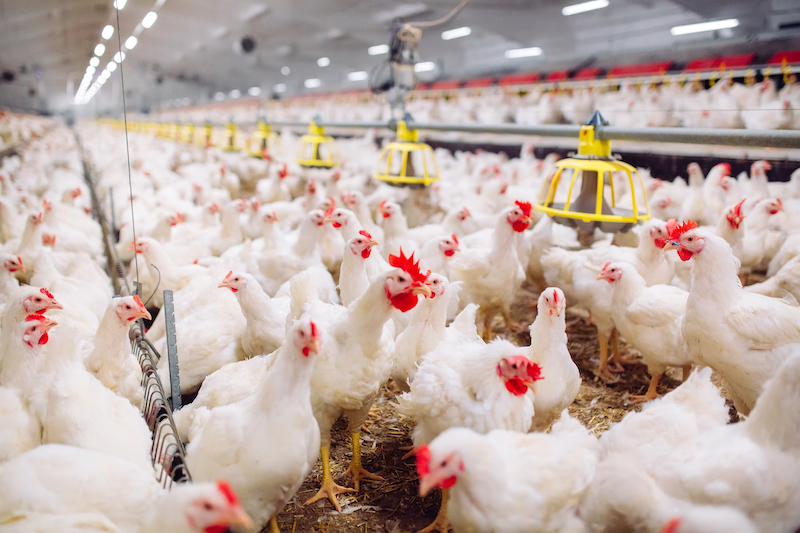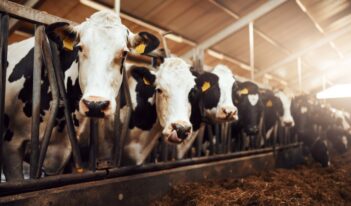
The U.S. Department of Agriculture proposes requiring chicken processors to provide more information in their contracts with growers.
Earlier this month, the U.S. Department of Agriculture (USDA) issued proposed revisions to its rules under the 1921 Packers and Stockyards (P&S) Act. The proposal would require chicken processors to provide current and prospective growers with more information about the financial risks inherent in contract chicken production.
The adoption of the P&S Act, which applies to meatpackers and poultry dealers, followed debates over antitrust and trade regulation that resulted in the passage of the Clayton Act and Federal Trade Commission Act. Incorporating and expanding on antitrust language from those acts, the P&S Act noted restrictions on trade that are hallmarks of monopoly power. It also incorporated tort language concerning trade regulations, unfair or deceptive conduct, unjust discrimination, and undue preference.
Congress provided the Secretary of Agriculture with the authority to develop rules, orders, and regulations to carry out the provisions of the P&S Act. Disclosure has been one staple of enforcement, aimed at deterring unfair or deceptive conduct, as well as unjust discrimination and undue preference that damages livestock producers. With its recently proposed revisions, USDA aims to provide growers with more detailed information on certain subtle financial risks associated with poultry production contracts to assist them in making significant investment decisions.
The chicken industry features a unique organizational structure. Almost all chickens are raised by growers under contract, with about 25 large processors that provide growers with feed, chicks, and veterinary services. Because feed and live chickens are costly to transport, processors contract with farms near their feed mills and plants. Markets for growers are therefore quite localized: 90 percent of contract growers are located within 60 miles of their processing plant, and most growers report no more than 3 processors within their region.
Growers provide housing, utilities, and labor. A single modern chicken house, capable of holding 60,000 birds at a time, costs about $350,000 to $400,000. A prospective grower will therefore need to invest $1.5 million or more, exclusive of land costs, in an efficient four-house facility. Most of these facilities are debt-financed and, with a 20 percent down payment, prospective growers can borrow well over $1 million on a 15-year mortgage.
Grower compensation is based on a “tournament” system. When the grower’s chickens are delivered to the processor, the total live weight of the delivered flock is recorded. The processor then calculates the grower’s “settlement cost,” or the processor’s total costs of feed and chicks delivered to the grower, divided by the total live-weight pounds of chicken returned to the processor. The grower’s settlement cost—feed and chick expenses per pound of delivered chicken—is then compared to an “average settlement cost” across all flocks delivered to the plant by all growers during a week.
Chicken contracts set a base pay per pound delivered, with premiums or deductions based on the grower’s settlement cost, relative to weekly average settlement costs. Those growers with relatively low settlement costs receive premiums over the base, while those with relatively high costs receive deductions. In turn, performance varies with flock mortality, with higher mortality implying fewer live-weight pounds delivered for any given placement of chicks. Performance also varies with feed absorption because calm and healthy chicks convert more feed to meat than stressed chicks.
The contracts used in chicken production significantly alter the mix of financial risks that farmers face. They shift the price risks associated with feed and mature chickens from growers to processors, since grower payments are independent of feed or chicken prices. Common production risks—arising from disease or weather that affect the performance of all growers—are also borne by processors since growers’ pay is based on their relative, not absolute, production performance. Growers understand these well-known risks.
Contracts, however, introduce new risks that growers may not perceive.
For example, a grower’s significant long-term capital investment can tie it to a specific processor via a short-term incomplete contract with few or no alternative contractors. Once growers make housing investments and commit to a processor, they face counterparty risks: the processor may go bankrupt or fail to deliver as many flocks in a year as the grower expects.
The processor may also demand further capital investment by growers as a condition of contract renewal.
Finally, the tournament method of compensation ensures that grower pay will vary widely around the average pay estimates that processors and extension agents provide, in part due to circumstances outside the grower’s control—the performance of other growers. Even though contracts shift price and common production risks to processors, the presence of other less well-known risks assures that chicken grower incomes vary quite widely compared to other farm households and to all U.S. households.
In the proposed rule, USDA aims to ensure that growers are better informed about counterparty risks and about pay variations in tournaments. Processors would be required to provide each grower with a disclosure document specifying the minimum number of flocks to be placed on the grower’s facility during a year, as well as the minimum stocking density of those flocks. The document would also need to note any bankruptcies declared by the processor in the previous six years and any litigation between the processor and any of its growers in the same time period. Processors would be further required to provide growers with expanded financial information in the form of tables showing distributions of grower pay over the previous year and measured according to revenue per square foot of housing. The distributions would include averages as well as quintile values, sorted by production complex and housing types.
USDA seeks comment on grower financial risks, their sources, the impact of contract design on those risks, and the efficacy of the proposed regulation. It uses a series of specific questions to elicit informed comments on the proposed rule and seeks to use that dialogue to develop a final rule.




